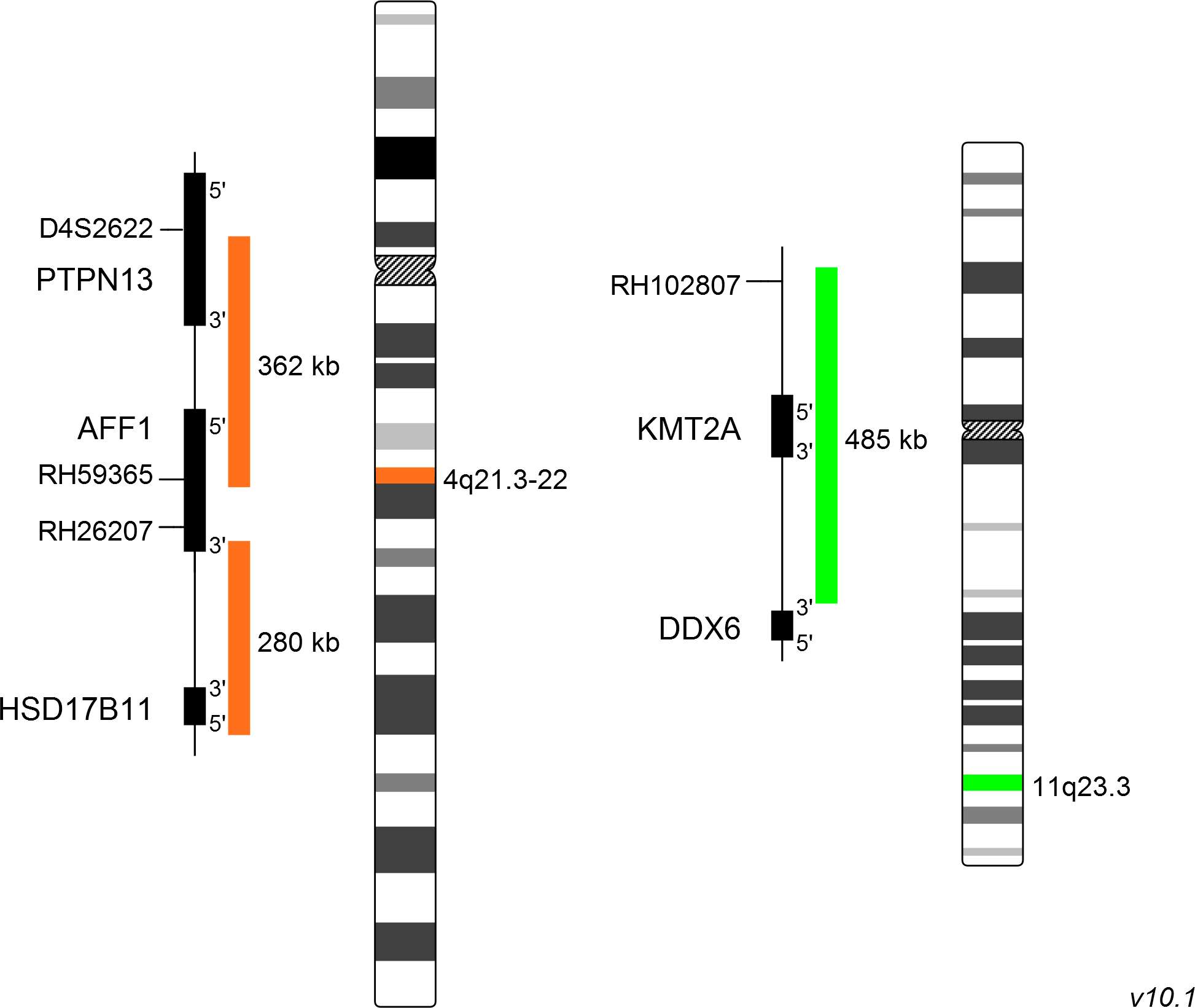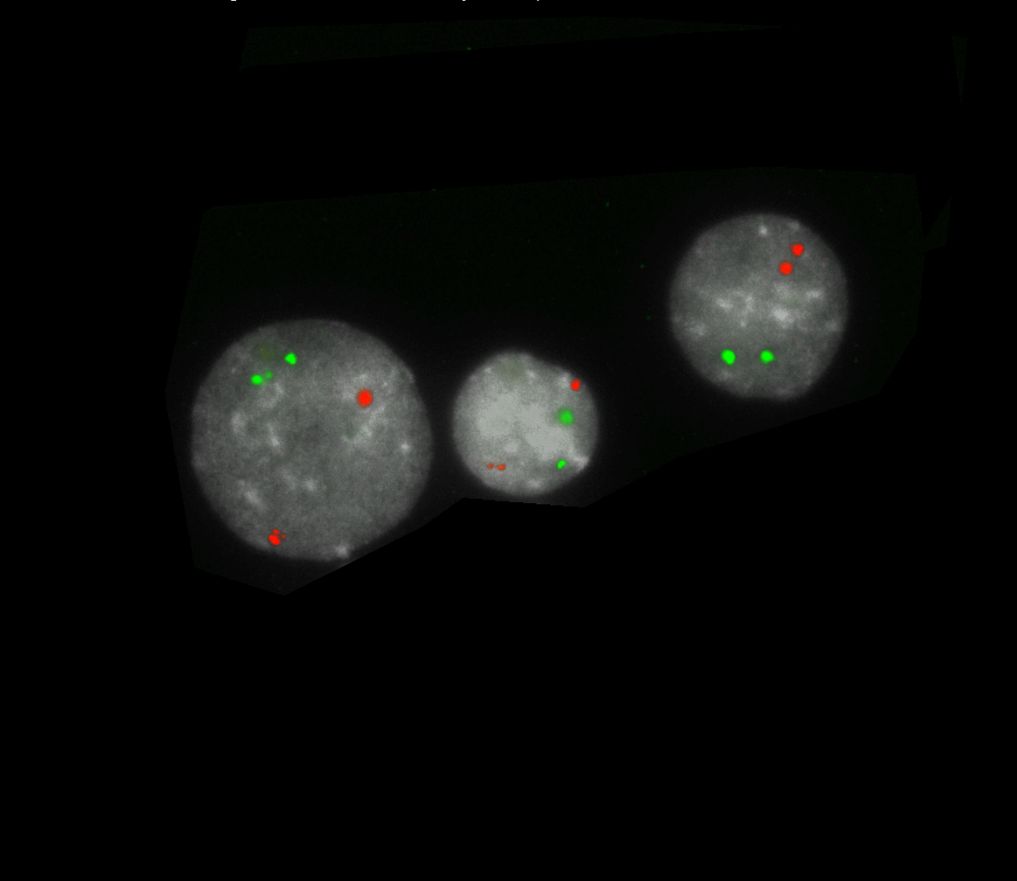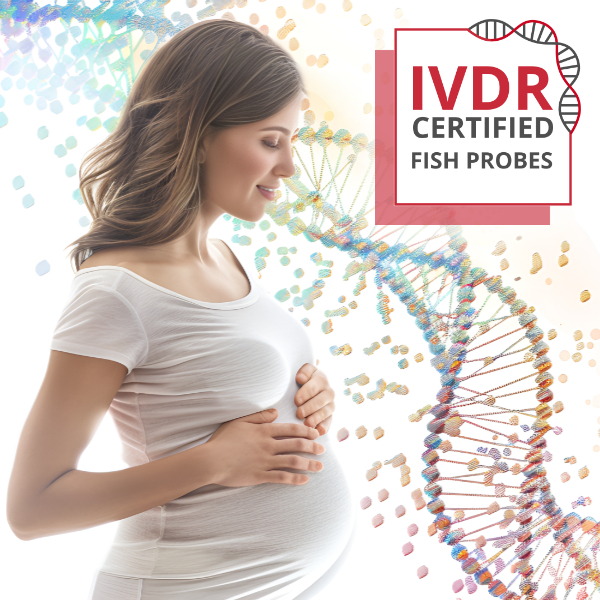
XL t(4;11) AFF1/KMT2A DF
Translocation/Dual Fusion Probe
- Order Number
- D-5131-100-OG
- Package Size
- 100 µl (10 Tests)
- Regulatory Status
- IVDD
IVDR Certification
MetaSystems Probes has already certified a wide range of FISH probes, according to IVDR.
This product remains IVDD-certified until further notice.
Discover all IVDR-certified products
XL t(4;11) AFF1/KMT2A DF consists of an orange-labeled probe hybridizing to the AFF1 gene region at 4q21.3-22 and a green-labeled probe hybridizing to the KMT2A gene region at 11q23.3.
Probe maps for selected products have been updated. These updates ensure a consistent presentation of all gaps larger than 10 kb including adjustments to markers, genes, and related elements. This update does not affect the device characteristics or product composition. Please refer to the list to find out which products now include updated probe maps.
Probe map details are based on UCSC Genome Browser GRCh37/hg19, with map components not to scale.
Chromosomal rearrangements of the KMT2A (lysine methyltransferase 2A) gene, formerly MLL (mixed lineage leukemia), are associated with various hematological disorders. Most patients suffer from acute myeloid leukemia (AML) or acute lymphoblastic leukemia (ALL), while only a minority develops mixed lineage leukemia (MLL). Several chromosomal aberrations involving the KMT2A gene have been identified. However, the majority of leukemias result from translocations leading to KMT2A fusions. More than 90 KMT2A translocation partner genes fused to the 5´- KMT2A portion have been identified. The most common translocation partners in KMT2A associated leukemia are AFF1, MLLT3, MLLT1, MLLT10, ELL and AFDN, described here in the order of their frequency. The fusion of KMT2A and AFF1 (AF4/FMR2 family member 1) is the most frequent KMT2A translocation observed in ALL cases. About 60% of ALL patients carrying KMT2A rearrangements are characterized by the KMT2A-AFF1 fusion gene. Infant patients mainly have breakpoints in intron 11 of KMT2A, whereas adult patients have a tendency for breakpoints within intron 9. Oncogenic KMT2A-AFF1 fusions have been implicated in the DOT1L and SEC transcriptional complexes. AFF1 plays an important role in the regulation of RNA polymerase II-dependent transcription, elongation and chromatin remodeling mediated by histone methylation. AFF1 is the docking platform for several components of the DOT1L complex consisting of DOT1L, a H3K79 methyltransferase, MLLT3, MLLT1, and MLLT10, whose genes are also common translocation partners of KMT2A. Mouse studies revealed increased and extended histone methylation signatures in the presence of KMT2A-AFF1 and reciprocal AFF1-KMT2A fusions. DOT1L inhibitors are promising candidates for clinical treatment which are currently being evaluated.
Clinical Applications
- Acute Lymphoblastic Leukemia (ALL)

Normal Cell:
Two green (2G) and two orange (2O) signals.

Aberrant Cell (typical results):
One green (1G), one orange (1O), and two green-orange colocalization/fusion signals (2GO) resulting from a reciprocal translocation between the respective loci.
- De Braekeleer et al (2011) Mol Oncol 5:555-563
- Meyer et al (2013) Leukemia 27:2165-2176
- Burns et al (2018) Hematology (7th ed) Ch 64: Pathobiology of acute lymphoblastic leukemia:1005–1019.e11
Certificate of Analysis (CoA)
or go to CoA Database




